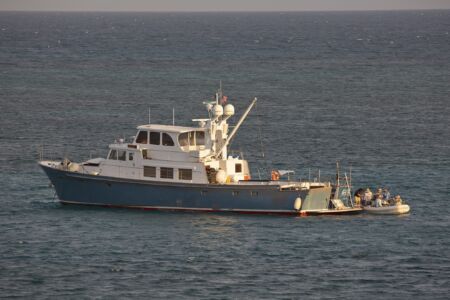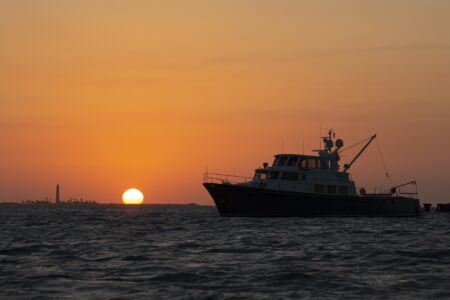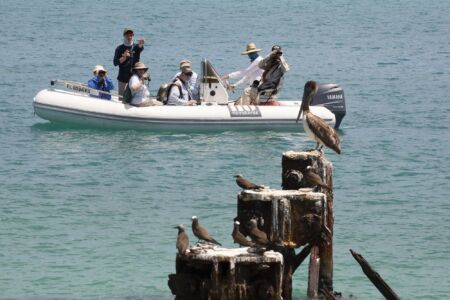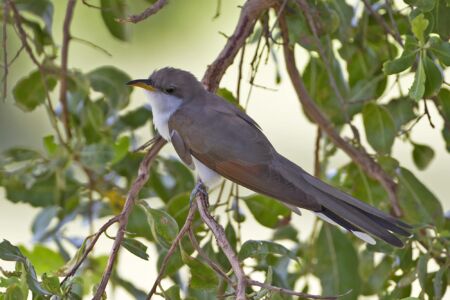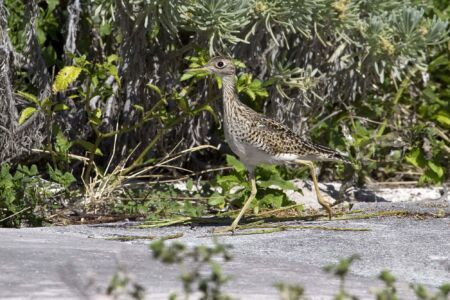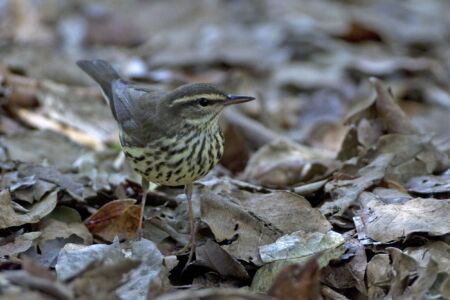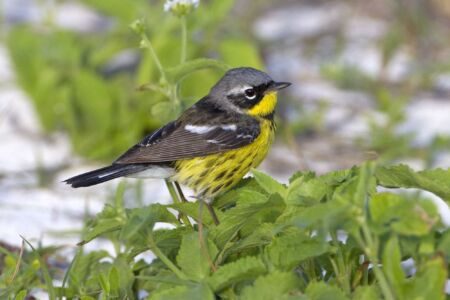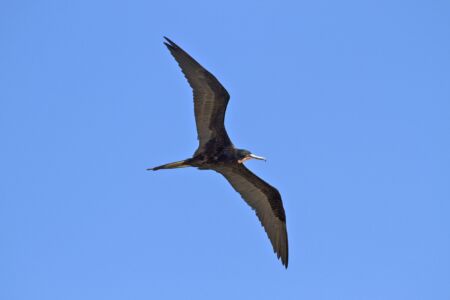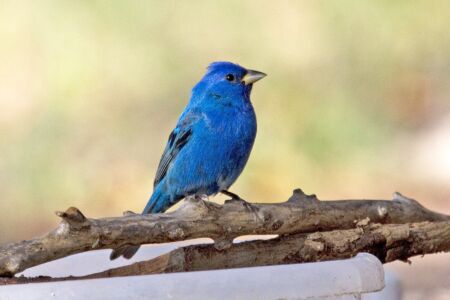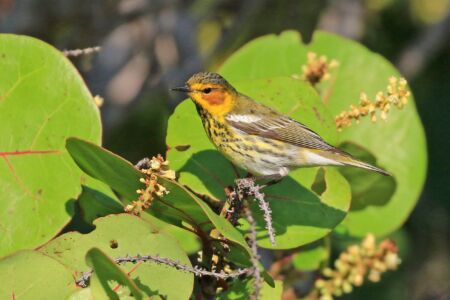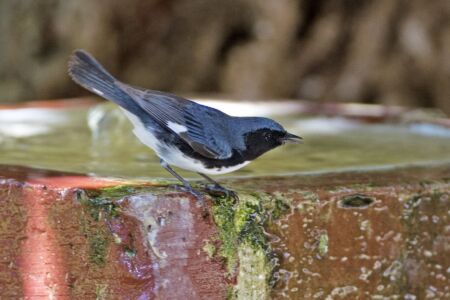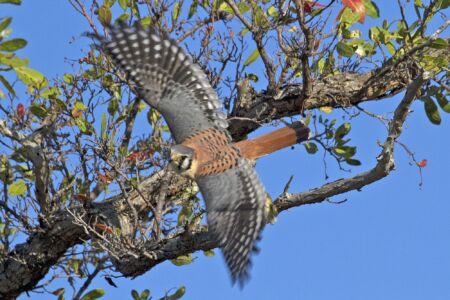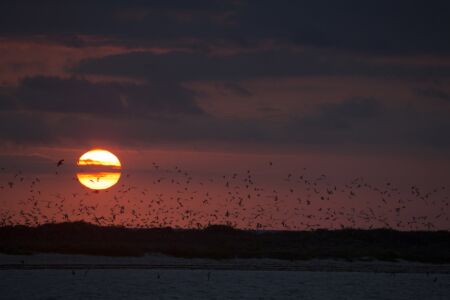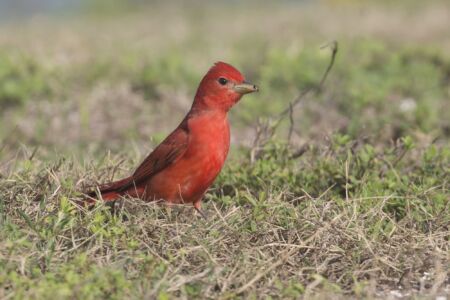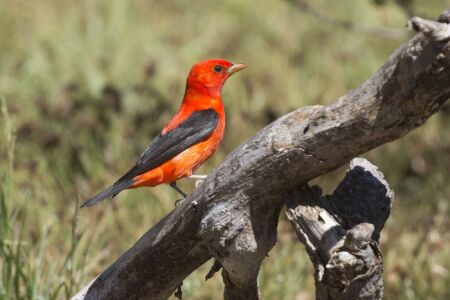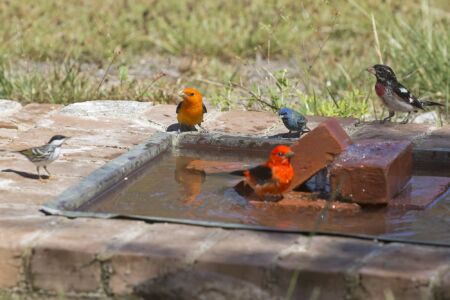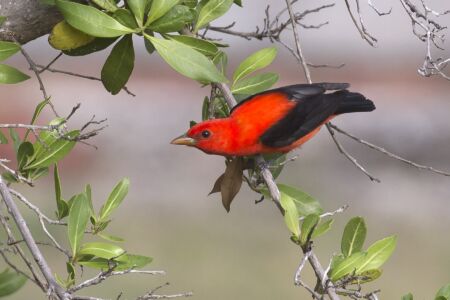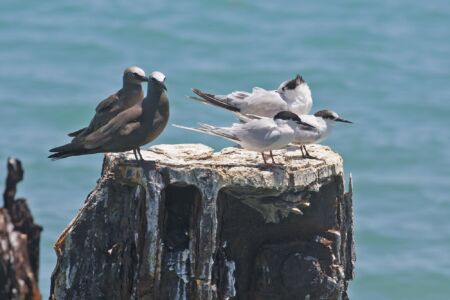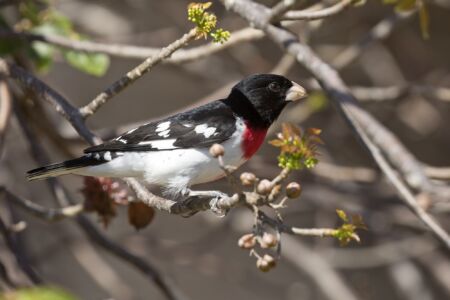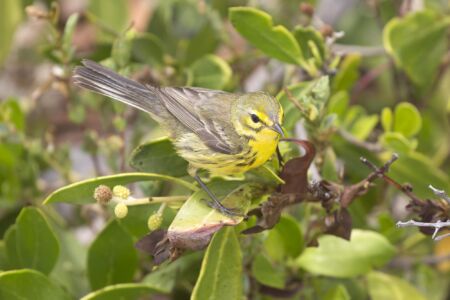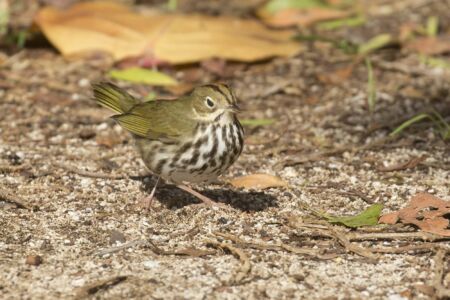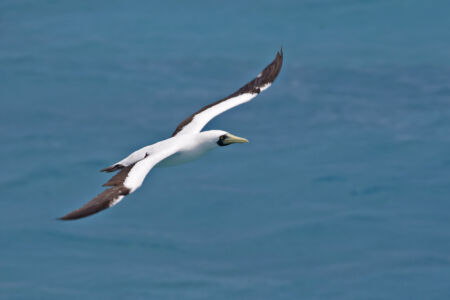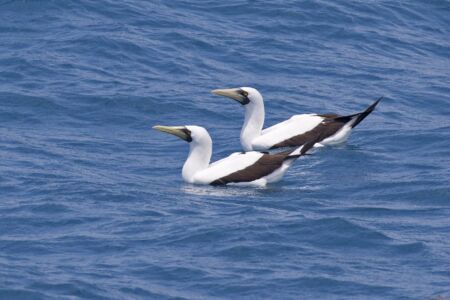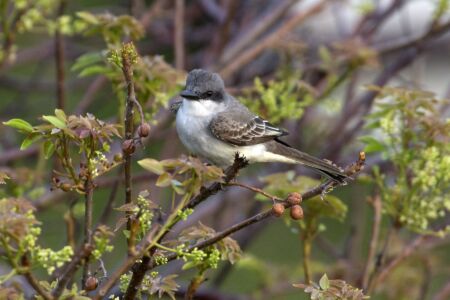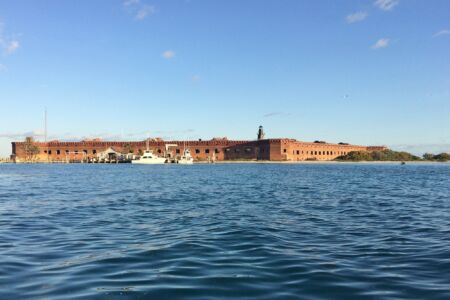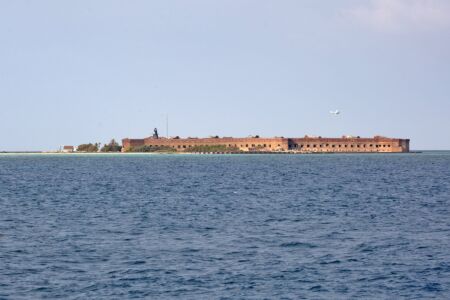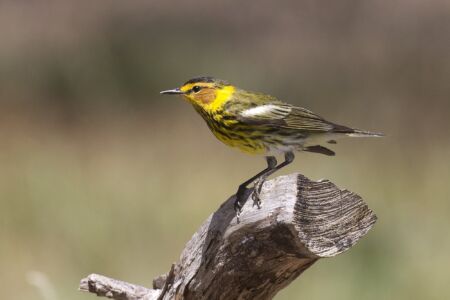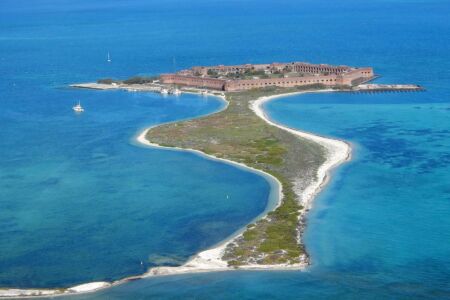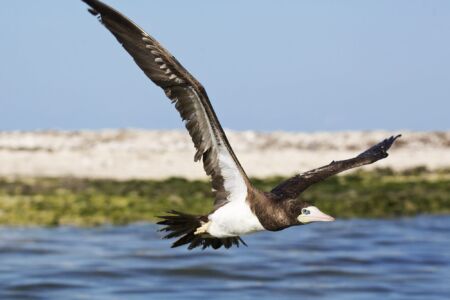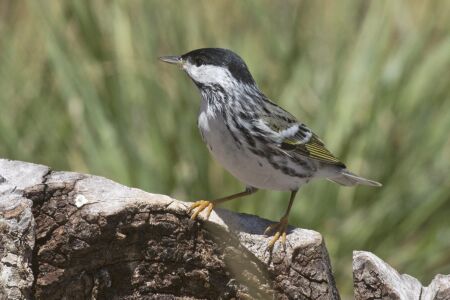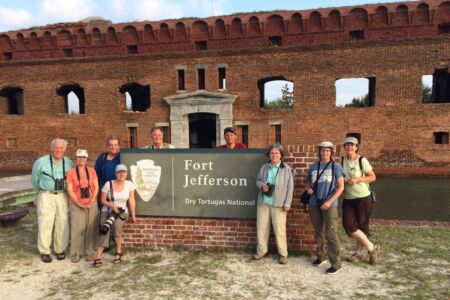Short Trips for Target Birds
DRY TORTUGAS 2025: Seabirds & Spring Migration
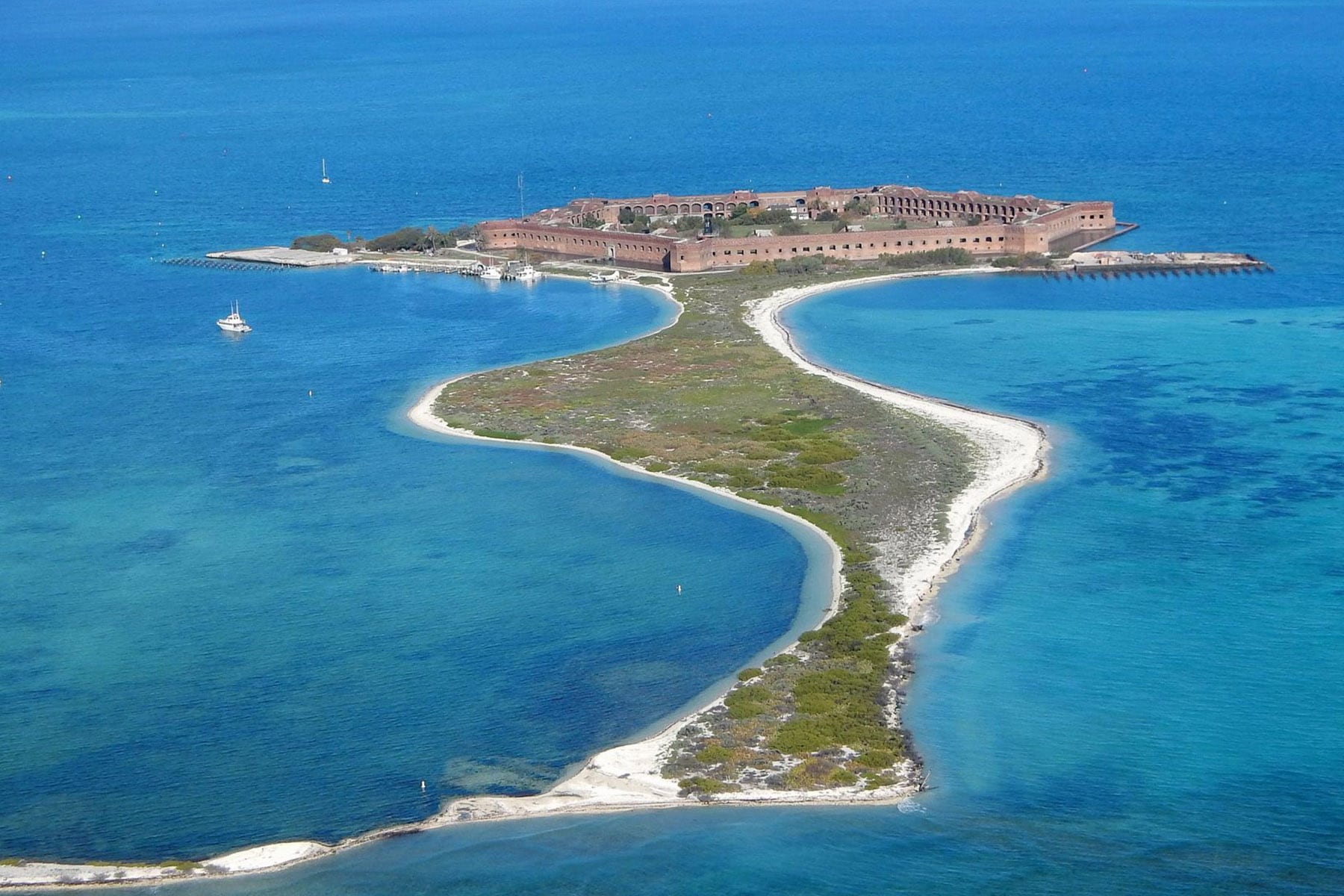
TOUR FOCUS
BIRDS & WILDLIFE
SCHEDULED TOURS
2026 :: April 20 - April 23
2026 :: April 24 - April 27
TRIP LEADERS
TOUR COST
From: $2,750 (See details)
Cost is per person, double occupancy from Key West, FL (EYW)
GROUP SIZE
8 Participants
AVAILABILITY
2025 – April 17 – 20: SOLD OUT!
2025 – April 20 – 23: 1 space
2025 – April 24 – 27: 1 space
2026 – April 17 – 20: 8 spaces
2026 – April 20 – 23: 8 spaces
2026 – April 24 – 27: 8 spaces
PRIVATE TOUR OPTION
This tour is available as a private trip for any size group. The tour cost will vary with the number of people and any custom requests.
TESTIMONIALS
Highlights of DRY TORTUGAS 2025: Seabirds & Spring Migration
Description of DRY TORTUGAS 2025: Seabirds & Spring Migration
Spring migration on the Dry Tortugas is a bucket list experience for every birder! Located 70 miles west of Key West, Dry Tortugas National Park and the historic Fort Jefferson attract thousands of nesting seabirds in addition to a wide diversity of migrant songbirds using these small islands as a stopover point during their long cross-Gulf journey to the mainland.
We’ll journey to the seven tropical islands that comprise the Dry Tortugas, and anchor for several nights to explore this fascinating locale at the height of spring migration. We’ll enjoy the large colonies of Sooty Terns, Brown Noddies, Magnificent Frigatebirds, and Masked Boobies as they create a cacophony of sound and flight swirling around the islands. For many species, this is the only place in North America where they breed! We’ll also look for a rare Black Noddy amidst hundreds of Brown Noddys.
Lucky birders visiting the Dry Tortugas have the chance to witness large numbers of passerines and other migrants that drop-in for a much-needed rest and re-fueling. Warblers, vireos, thrushes, and other migrants can sometimes fall-out on the islands by the dozens! Close-up views and great photo opportunities make for an exciting three days of birding in this unique environment. Caribbean vagrants are a possibility too, including Bananaquit, Yellow-faced Grassquit, Red-legged Honeycreeper or Bahama Mockingbird. We’ll look for pelagic species and marine animals during our boat ride to and from the islands. Snorkeling and sightseeing around historic Fort Jefferson add to the many activities that make up this wonderful Dry Tortugas experience.
As with all our boat-based tours, we require that you purchase trip insurance.
The Dry Tortugas is one of those “must visit” places for every birder! Wildside Nature Tours offers a fantastic experience, with comfortable living quarters on the boat and delicious, freshly prepared food each day. Adrian Binns and Chris Brown are exceptional guides. True professionals – they made sure that all eyes connected with every bird. Their passion for the birds, and their appreciation of the surrounding beauty of the island, ocean and landscape was contagious. Their enthusiasm enhanced the level of excitement and fun for everyone on the entire trip. I can’t wait for my next birding adventure with Wildside! – Becky L., Bayville NJ
Wildside Nature Tours is an authorized permittee of the Dry Tortugas National Park.

Why is the Dry Tortugas a major birding destination? Click here for Q&A
Click here to for the seabird specialties of this trip!
Watch our webinar – Dry Tortugas: Seabirds & Spring Migration
Length of Tour
4-days/3-nights
Brief Itinerary
Day 1 – Board the “Makai” in the evening in Key West
Day 2 – Set sail pre-dawn; AM pelagic birding; PM Dry Tortugas
Day 3 – Dry Tortugas
Day 4 – Dry Tortugas; AM journey back to Key West, arriving mid-afternoon
Detailed Itinerary
Day 1 – Meet in Key West, Florida
Meet in Key West early evening to board the “Makai” for the first of 3 nights.
Day 2 – The Gulf Stream; The Dry Tortugas

We set sail before dawn. Daybreak will find us out in the Gulf Stream (weather permitting), where pelagic birding should reward us with Bridled Tern, Audubon Shearwater, northbound Pomarine Jaegers and there is always the chance of a White-tailed Tropicbird (don’t count on it, though we did see it in 2004) Roseate Terns often are seen on the buoys, as are Brown Boobies. Nearing the Dry Tortugas, Sooty Terns, Brown Noddies and Magnificent Frigatebirds will become a common sight. This is the only place in North America where these 3 species nest along with Masked Boobies. Once we reach the 15-acre Garden Key, the second largest of the 7 islands that make up the Dry Tortugas, most of our birding will be done within the remains of the impressive 19-century brick Fort Jefferson. Here amongst the sea grapes, cottonwoods and Geiger trees we should encounter a wide variety of migrants, including Gray and Eastern Kingbirds, Ruby-throated Hummingbirds, Gray-cheeked Thrush, Yellow-billed Cuckoos, Red-eyed Vireo, and numerous warblers including Blackpoll, Cape May, Black-throated Green, Palm and Magnolia. For those who are patient enough to sit by the water fountain, the only source of freshwater on the island, the rewards should be great, as all passerines will eventually make their way down for a drink or to bathe.
Day 3 – The Dry Tortugas

All of Garden Key, the campground, shrub covered brick piles, coaling docks, and beaches, will be explored for additional passerines that may have dropped in, such as Rose-breasted Grosbeak, Black-whiskered Vireo, Ovenbird, Black-and-White Warbler, Wood Thrush, Common Nighthawk, and the Caribbean race of Short-eared Owl known as the “Arawak Owl”. Shiny Cowbird, Orchard Orioles, Indigo Buntings, Blue Grosbeaks, Common Yellowthroats and Bobolinks are all certainly possible as they try to avoid one of the many raptors such as Merlin or Peregrine that can be seen perched on one of the few trees. During our stay we will visit Hospital Key by boat, from which we will view the Masked Boobies as they return to this small sand key from fishing forays. We will also utilize our zodiac to see Magnificent Frigatebirds nesting up close and view nesting Sooty Terns and Brown Noddies from the spit adjoining Garden and Bush Key. The Dry Tortugas being the only place in North America where these four species breed! A highlight will surely be finding a Black Noddy amongst the hundreds of Brown Noddies that roost on the coaling docks or on Bush Key. Not an easy task! For those with an interest in marine life, a walk around the moat walk can yield some fascinating creatures. Green Moray Eels, lobsters, jellyfish, starfish, octopus, tropical fish, Nurse and Hammerhead Sharks have all been seen lurking amongst the sea coral in these tropical waters. Anyone interested in snorkeling (only allowed around the outside of the moat) will have to bring their own gear.
Day 4 – The Dry Tortugas; Return to Key West

After breakfast, we’ll make a short visit to Garden Key to check for any overnight migrants before heading back to Key West. Along the way we should encounter Brown Boobies perched on buoys along the park perimeter boundary; Bottle-nosed Dolphins; Loggerhead Turtles and Gannets, Royal, Sandwich and Roseate Terns, as we get closer to our destination.
We aim to return to Key West between 3 and 4pm.
Note: The daily itinerary may change but we hope to be able to get to do everything mentioned during the course of our trip. The seas and weather conditions will dictate our sailing times and route. Should the weather be good when we set sail from Key West, we will venture into the Gulf Stream to look for pelagic species prior to arriving at Garden Key early afternoon, after lunch.
Cost
Cost is $2,750 per person, based upon double occupancy, from Key West, FL (Airport code EYW).
This trip ends in Key West, FL (Airport code EYW).
NOTE: As we are on a boat with limited space, NO SINGLE ROOMS ARE AVAILABLE. 2 to a room, unless you request 3 in a room!
Cost Includes
Included in the cost are 3 nights accomodations aboard the “Makai” and all meals from breakfast on Day 2 through lunch on Day 4, and services of your professional leader(s).
Cost does not Include
Flights to/from destination city or marina, trip insurance, gratuities to the “Makai” crew, or anything that is not specifically mentioned in the itinerary.
Minimum Number
If fewer than the minimum number of participants are registered the trip can still run with a small-group supplement fee per person determined by the number of participants.
Single Supplement
If a single room is preferred, or we are unable to find a suitable roommate for you, a single supplement fee of $0 will be assessed.
Deposit Requirements
A $750 deposit per person is required to hold each space on this tour. Deposit may be made online by clicking the "Book Your Trip Now" button and using any credit card. If you prefer, you may call us at 888-875-9453 to pay by phone. You may also mail us a check, however, remember that all space is held on a first come-first served basis as deposits are received.
Minimum Number
If fewer than the minimum number of required participants are registered, we may still be able to run the trip by adding a small-group supplement fee, per person, determined by the number of participants registered.
How to Book
In order to hold your space, click the "Book Your Trip Now" button above and complete the deposit process, including payment of the deposit through our Paypal portal using ANY CREDIT CARD. Upon completion of deposit, please visit our secure, online CLIENT INFORMATION FORM to complete your registration.
Final Payment
For all land-based tours: full payment by check is due 120 days prior to the departure date.
For all boat-based adventure cruises of 7-days or longer: full payment by check is required 180 days prior to departure.
NOTE: If you prefer to use credit card for final payment, a 3% fee may be added to cover the credit card merchant fees we incur.
Boat: 3 nights aboard the “Makai“
The 88 foot “Makai” has 4 separate air conditioned cabins that sleep 10 guests, all with bunk beds. There are no single rooms. All rooms are shared.
Two cabins have 2 bunk beds, one cabin has 3 bunks, and one with 3 bunks with a curtain partitioning the cabin. The cabins with 2 bunk beds will be reserved for a couple on a first come first served basis. The remaining cabins may have to be mixed sexes depending upon the group makeup. If you do not have a roommate, you will be assigned one.
There are 2 heads (bathrooms with showers) on board.
Bring a towel and wash cloth with you, as these are not provided on board. Linens are provided.
Activity Level Rating: 3 (Note: 1 is easy and 5 is difficult)
You will need a certain degree of mobility and flexibility to embark on and off the boat. Participants need to climb a ladder or steps to the second level; keep balance (holding on) on a rocking boat; and maneuver themselves in and out of a zodiac boat (tender/skiff) when we arrive at Fort Jefferson (Garden Key). Note we are anchored outside the fort harbour, so we will be using the zodiac boat (tender/skiff) to go back and forth between the boat and Fort Jefferson (Garden Key). Sea conditions can vary and the short ride can be rough and bouncy. Depending upon tides, you may need to sit on the dock, and drop 2-3 feet into the zodiac, with the help of crew hands.
On the islands, the terrain is flat and mostly even. Brick pathways can be uneven, and caution is needed while walking around the moat. Avoid areas around the helicopter pad and coaling docks that are in disrepair, with piles of bricks or debris. Walking is a little tougher on the sand-coral beach. To reach the top of the fort, which offers excellent views of the surrounding waters and islands, requires walking up flights of stairs to the third level. Once of top, there is a narrow pathway between corner bastions, where it is safer to view. For your safety stay away from the edge (there is no barrier), as it is a long way down into the moat!
 Recommended Field Guides
Recommended Field Guides
National Geographic Field Guide to Birds of North America, (7th edition, 2017)
– includes the possible Carribbean strays
Sibley Guide to Birds: Eastern (small and compact).
The Sibley Guide is also available as an App.
Non-smoking Tour
This trip is for non-smokers only. Smoking is not permitted at any time during our tour.
Trip Insurance
As with all boat based trips, due to the remoteness of the location and that hazardous weather conditions might effect or cancel the trip, we require that you purchase trip insurance. Information about trip insurance is linked here.
Arrival & Departure in Key West
You will need to be at the marina in Key West to board the “Makai” at 7pm on Day 1. On Day 4 we expect to dock back in Key West between 3-4pm. This is not a guarantee as sea conditions play a factor in the length of the journey and it could vary by an hour or more.
Parking at the Marina
You can leave your vehicle at the marina at no charge.
Luggage
Space on the boat is limited. Please bring a small soft-sided duffle-type bag for clothes, and toiletries/medications. It is also advisible to bring a back pack for day use on the island.
Meals
All meals on the boat, from breakfast on Day 2 to lunch on Day 4, are included in the cost. If you have any dietary restrictions, please let us know at the time of registration, and these can be accomodated by our excellent chef.
Snorkeling
One can snorkeling around the outside of the moat at Fort Jefferson, on Garden Key, in the Dry Tortugas, but you will need to bring your own equipment.
“Makai“
– Our U.S. Coast Guard Inspected motor vessel, m/v Makai, is 80 feet long with a twenty foot beam.
– Experienced and well-seasoned crew of 3 to 4, (2 licensed Captains)
– She sleeps 11 guests in four separate air conditioned staterooms, all with bunk beds. Shared accommodations; no single rooms.
– There are two heads (toilet, washbasin, shower).
– Cuisine is prepared from the finest quality produce, meats and of course the freshest seafood you can get!
– Sundecks Fore and Aft
– Shaded back deck
– Ice maker
– Fresh water maker storing 250 gallons
– Dual Engines and generators
– Satellite phone for emergencies
– TV DVD/VCR and Stereo
– 1100 Gallon fuel capacity
– Emergency oxygen and first aid equipment
– USCG Ceritified each year (stability rating is “excellent”)
Additional Questions?
Why visit the Dry Tortugas?
The Dry Tortugas is a major birding destination in the United States, and a must-see experience for every birder. Located just 70 miles west of Key West, Florida, the cluster of 7 small coral islands host thousands of nesting tropical seabirds – a spectacle found nowhere else in the country. With spectacular birds, sparkling blue waters, remarkable historical structures, and interesting sea creatures, the Dry Tortugas offers a unique, tropical-paradise experience.
Why is the Dry Tortugas a major birding destination?
Thousands of tropical seabirds congregate at the Dry Tortugas during their nesting season (March-July), creating a cacophony of sound and sight. Among the vast colonies are four species that nest only in this location in the United States. The islands also attract a variety of colorful spring passerines, including sub-tropical specialties and potential vagrants, who touch down on the islands during long migratory journeys. A dozen different species may stand side by side to drink fresh water from the fountain maintained just for them
What are the special birds of the Dry Tortugas?
Sooty Terns are the most numerous birds on the Dry Tortugas, with as many as 80,000 breeding on Bush Key. A smaller number of Brown Noddies join the mix, with one Black Noddy usually found amongst the colony. About 100 pairs of Magnificent Frigatebirds nest on the adjacent Long Key. A short distance away is Hospital Key, just a narrow stretch of coral sand where Masked Boobies raise their young on open ground.
During the boat journey, we’ll search for such pelagic species as Brown Booby, Audubon’s Shearwater, and Bridled Tern. We may get lucky with rare Red-footed Booby or White-tailed Tropicbird.
Migratory passerines may include a diverse assortment of warblers, buntings, vireos, orioles, cuckoos, thrushes, flycatchers, along with-tropical specialties such as Black-whiskered Vireo, Gray Kingbird, Shiny Cowbird, and Antillean Nighthawk. Caribbean strays are also possible.
Why is it called the Dry Tortugas?
Spanish explorer Juan Ponce de Leon described the islands after landing there in 1513. He found an abundance of nesting turtles – an important food source for his crew – and named it Tortugas. The word ‘Dry’ was added to navigational charts, so that sailors and shipping merchants knew there was no fresh water on the islands.
What is the history of the Dry Tortugas?
Geographically, the Dry Tortugas, a cluster of 7 small islands called “keys,” is the gateway to the Gulf of Mexico from the Atlantic Ocean. After it’s discovery by Spanish explorer Ponce de Leon in 1513, it remained strategically important for shipping and commerce.
Fort Jefferson was constructed on Garden Key in 1846, to protect thriving trade routes to and from the Mississippi delta. This military fortress was once the largest brick structure in the western hemisphere, and still reflects imposing architectural strength and style.
During the U.S. Civil War, Fort Jefferson was controlled by the Union, and blockaded Confederate ships from entering the Gulf. The fort served as an ideal prison, in a remote location, weathering harsh storms, with no reprieve from searing sun or biting insects. The prison’s most famous inmate was Dr. Samuel Mudd, who was imprisoned for providing medical assistance to John Wilkes Booth, Abraham Lincoln’s assassin. In 1867, yellow fever broke out and spread rampantly among the confined soldiers and inmates. Dr. Mudd worked tirelessly day and night to care for the sick and implement hygiene protocols that saved hundreds of lives; he was eventually pardoned for his contribution. Fort Jefferson was never officially finished, and was abandoned in 1875.
Artist and ornithologist John James Audubon spent 6 days at the Dry Tortugas in May 1832, painting Brown Booby, Brown Noddy and Sooty Tern, which where included in his Birds of America.
In 1908, the Dry Tortugas was designated a federal bird reserve. It became a National Park in 1992, encompassing 100 square miles of mostly marine habitat. Only the 7 small islands, less than 1%, is dry land. Today, the park welcomes thousands of visitors annually.
When is the best time to visit the Dry Tortugas?
Spring is the best season to explore the Dry Tortugas, from the beginning of April through mid-May. This timeframe coincides with tropical seabird breeding season, and the journeys of millions of migratory songbirds and raptors winging their way up the Atlantic flyway to northerly breeding grounds.
How do you get to the Dry Tortugas?
The Dry Tortugas National Park is accessible only by boat or seaplane. A ferry departs Key West daily (day boat), for a brief tour. Limited camping is available on Garden Key, but you have to bring all your own equipment and food. Wildside Nature Tours charters a boat for a 4-day/3-night trip.
Why is Wildside Nature Tours Dry Tortugas a must-do experience?
Wildside Nature Tours charters the Makai for a 4-day/3-night experience in the Dry Tortugas. Our boat anchors off of Garden Key (the main island), providing optimal access. We enjoy delicious meals, spectacular sunsets, and a relaxed birding pace with expert guides and professional crew. Our multi-day agenda allows time for thorough scanning and pelagic opportunities, too. Adrian Binns has been visiting the Dry Tortugas for more than 25 years, guiding birders for some of their most wonderful moments in this island paradise.
Purchasing Flights
Do not purchase your flights until the trip has been confirmed to go.
Detailed Trip Information
Upon notification that final payment is due (120 days prior to departure for land based tours / 180 days for boat based tours), you will receive a trip package of detailed information for your tour.
Any additional information about the trip, including lodgings, contacts, participants, meeting locations, etc., will sent about 2 weeks prior to the trip departure, or after final payment is received for late registrants.
Travel Insurance
As with all tours, we recommend purchasing Travel Insurance to help cover your investment, for covered reasons. Please see our section on Travel Insurance.
Passport & Visa
US Citizens may require a visa to enter certain foreign countries. See above for any required visa information.
Participants arriving to the USA from a foreign country may need to get a travel visa to enter the United States. Be sure to check the requirements for your country of origin.
Itinerary Changes
The trip itinerary is developed many months ahead of time. Occasionally, despite our best planning, changes may occur during the trip, or we may be forced to alter our plans. Changes may occur because of weather, road conditions, safety concerns or other circumstances. In these situations, it is the leader(s) responsibility to carefully consider and implement appropriate alternatives. Any additional costs incurred because of changes will be the responsibility of each individual participant. Refunds will not be issued as a result of itinerary changes.
Trip Reports/Species Lists:
2024 Dry Tortugas eBird Trip Report #1
2024 Dry Tortugas eBird Trip Report #2
2024 Dry Tortugas eBird Trip Report #3
2024 Dry Tortugas eBird Trip Report #4
2023 Dry Tortugas eBird Trip Report #1
2023 Dry Tortugas eBird Trip Report #2
2023 Dry Tortugas eBird Trip Report #3
2023 Dry Tortugas eBird Trip Report #4
2023 South Florida & DT’s eBird Trip Report
2019 Dry Tortugas eBird Trip Report #1
2019 Dry Tortugas eBird Trip Report #2
2019 South Florida & DT’s eBird Trip Report
2018 South Florida & DT’s eBird Trip Report
2017 South Florida & DT’s Trip Report
2017 South Florida & DT’s Species Recorded
2017 Dry Tortugas eBird Trip Report #1
2017 Dry Tortugas eBird Trip Report #2
2017 South Florida & DT’s eBird Trip Report
2016 South Florida & DT’s Trip Report
2015 South Florida & DT’s Trip Report
2014 Dry Tortugas Species Recorded
2010 South Florida & DT’s Trip Report
2009 South Florida & DT’s Trip Report
Additional content:
SPECIES RECORDED DRY TORTUGAS 35 trips 1996-2019
Species Spotlight: Magnificent Frigatebird
Location Profile: The Dry Tortugas
Webinar: Seabirds & Spring Migration
ID Breakdown: Black-throated Blue Warbler
Dry Tortugas: Seabird Specialties
iNaturalist Guide to Wildlife, Insects, & Plants seen on this tour!















